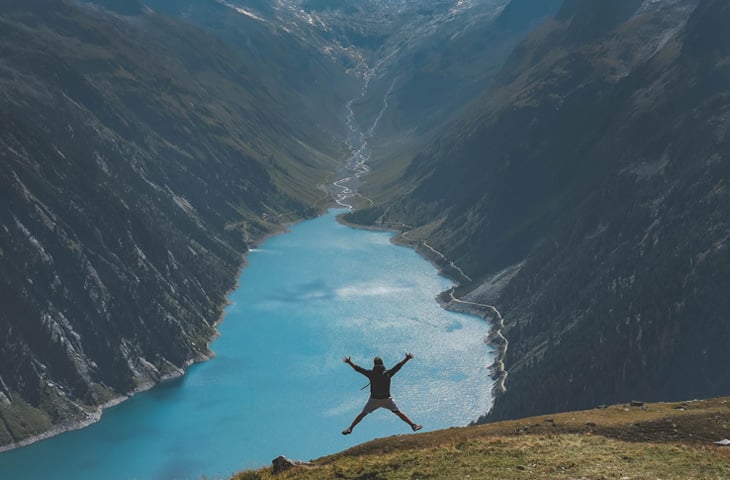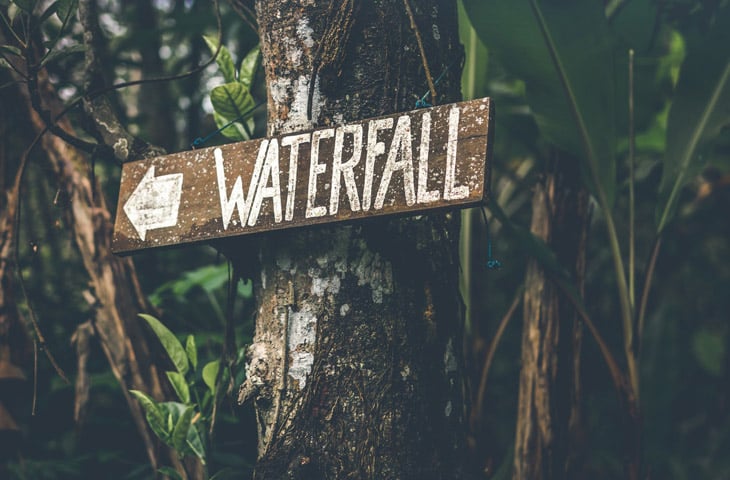Recent times have called for many businesses to take a bigger portion of their operations online while the team works remotely out of office. Because of this, you might be thinking about updating your travel website design to provide a better end-user experience.
Perhaps it’s been a while since you updated the design, or maybe you have noticed areas that need improvement after working a lot more on the internet.
Either way, a user-friendly website with a sleek modern design acts as your permanent shop window for the world. Because of this, it’s always a good time to fine-tune it and ensure that it’s ready to win over travelers.

When To Update Travel Website Design?
Gone are the days of selling by brochure or mass email leaflet. To succeed as a tour operator, you need a beautiful website that is engaging, informative, and provides a fluent customer journey.
But how do you know if it needs a redesign/update?
Take a minute to quickly assess your site, and we mean quickly. It takes about 50 milliseconds for a new visitor to form an opinion of a website, so there’s definite pressure to make that first impression count.
At a glance, does it inspire you to travel? Are your tours displayed beautifully with eye-catching images and visible headlines? Is the site professional and modern, providing an authentic representation of your brand?
Is the user-experience seamless, do visitors know how to easily find what they are looking for? When browsing different pages, products, or photos on the site, do they load quickly without unnecessary delay?
You should also investigate whether the site is responsive to mobile screens, as this is the preferred device for around half of your website visitors. Since 2017, the split of global mobile and desktop website traffic has consistently hovered around the 50% mark.
If the answer to any of the questions above is no, then you should update your travel website design to provide a better experience.

To recap, update the website design if it:
- Looks outdated and unmodern
- Doesn’t reflect your travel brand and current products anymore
- Is difficult to navigate with a bad user experience
- Doesn’t provide optimal viewing on mobile and tablet screens
Once you know that changes need to be made, the next question is what exactly should you focus on?
Website Design Features To Improve
Taking cues from the evaluation you have just made, you will be able to figure out what it is that you need to improve in the travel website design.
Mainly you want to build on trust, and make the user journey both interesting and informative while being simple.
Therefore, the best practices relating to design feature improvements include focusing on some or all of the following:
- Engaging design layout
- Beautiful imagery
- Logical site structure
- Optimal navigation, including fast page loading speeds
- Compelling product copy, company branding, and information
Let’s look at these in more detail.
Engaging Design Layout

The design layout of your website is going to be dependent on the web platform and theme/template you use.
If it’s time to update this, then, generally speaking, you’ll be able to find a new modern theme specifically designed for travel businesses. It should have a clean and simple layout, with space for large images above the fold to draw in the user’s attention.
Most are automatically mobile responsive, although you might find certain added design elements from external plugins need to be formatted to ensure they comply.
Any colors and fonts you use should be applied consistently to reflect your brand guidelines. Ultimately this helps travelers to identify your company and recognize it in the various spaces you occupy online.
Beautiful Imagery
Beautiful images and video are your tickets to converting visitors to inquiries. They bring your product and team to life, allowing potential clients to get a better feel for what you have on offer.
Leverage your own library of images to update your travel website design, as well as use some from your guides and past clients. There are also sites where you can download free stock images with no copyright restrictions.

Logical Site Structure
The site structure impacts the logical flow of information on your website and determines how a traveler discovers information. Well-labeled pages and menus provide clear navigational directions and help people to browse your site and find what they are looking for.
For example, if you offer tours of varying lengths to several continents, you might categorize them under menus of the same labels. This would allow travelers to quickly identify suitable tours based on their destination preference and the number of days they want to be away.
Optimal Navigation
You might also use CTAs to drive certain navigational actions, such as to jump to a product page where travelers can make an inquiry or book.
Of course, your site needs to be able to support the fast loading speeds that internet users expect. If you can’t optimize pages to load and display quickly, you risk losing clients.
Ensure that your website imagery is optimized accordingly and that your hosting package can support the volumes of online traffic you anticipate without compromising on website speed.
Compelling Website Copy

Compelling website copy, whether detailing your tour information or telling visitors more about you, goes a long way to converting business. That's why you should update it when performing the upgrade to the travel website design.
Keep in mind that well-written text inspires travelers, giving them a sense of what lies ahead on your tour.
It also establishes trust through the demonstration of knowledge, helping to persuade the purchase decision.
It informs travelers, letting them know which trip to invest in based on their vision and expectations.
Finally, through SEO, it helps travelers to find you online, connecting their searches with your keywords.
On the other hand, vague or thin content fails to invoke emotion, establish trust, or inform decisions.
Final Thoughts
A beautiful, responsive website that contains the right information and imagery, along with optimal navigation and loading speeds, is critical for your travel business’ success.
Although inquiries and reservations might be slow at the moment, demand for travel will pick up again at some point. History has proven how resilient the travel industry is when it comes to bouncing back from a crisis. When it does, you want your site to be ready to catch the demand.
New resources, straight to your inbox
We’re committed to your privacy. WeTravel uses the information you provide to us to contact you about our relevant content, products, and services. You may unsubscribe at any time.



